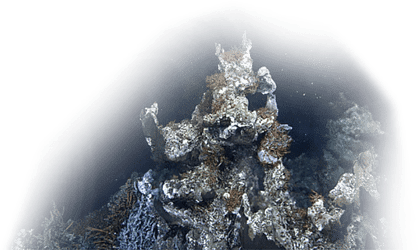Citizen scientists around the world are invited to participate in a new sablefish counting study. Two years after our original Digital Fishing Derby, we are now launching a follow-up study, which will help researchers refine the results from the first study. The goal is to count sablefish, or black cod, that appear in a series of one-minute clips—almost 1,500 clips in total.
How to Participate
Using Digital Fishers, count the number of sablefish (black cod) you see during individual 1-minute video clips. At the end of the 60-second clip, the video pauses. You can then select sablefish (black cod) and a corresponding number (0-12) from the dropdown menu under the Sealife category, as shown below. For this new mission, citizen scientists (you) are asked to count the number of sablefish that they see throughout the entire clip. Every sablefish. Even if it is only part of a sablefish or if appears that the same sablefish came back into the screen. At the end of the clip, the screen will pause. Participants can then select Sablefish and a corresponding number (0-12) from the dropdown menu.
Identifying one sablefish in DigitalFishers.
Meet the Competitors
Analyses from 4 different sources will be used in this research project:
1. Scientist (PhD student): A research group in Spain is investigating the influence of the daily and tidal cycles on the activity of the sablefish. A PhD student from their lab analysed these videos, counting fish and invertebrates, and focussing on the sablefish because of their large numbers.
2. Experienced users (biology class): 60 students in a biology class at the University of Victoria analysed these videos and counted the fish.
3. Automated detection (computer algorithm): We have a PhD student who has developed a computer algorithm; this mission can be used as a reliability test.
4. General public/citizens (Digital Fishers): YOU
Patience Required
In previous Digital Fishers campaigns, participants were asked to analyze video clips that were 15 seconds long. For this campaign, we are need people to watch 1 minute of video, so we can have a more accurate match with previous analyses done by an expert. Your patience and attention are greatly appreciated!
What if the Lights Go Out?
Frequently, toward the end of a clip, the lights will go out (they are illuminated and turned off automatically), but 2 red laser beams remain illuminated. Do not count sablefish you see passing through the laser beams when the lights are out.
Automated Analysis
Your eyes and observations will not only support ocean research projects but also help computer scientists at the University of Victoria’s Computer Vision Research Lab develop algorithms that one day will automate the long process of watching many hours of undersea footage. Automated analysis of underwater video is a very active area of research, with some early results already gleaned by researchers who are fine-tuning their work based on input from citizen scientists who watch and annotate the same footage.
